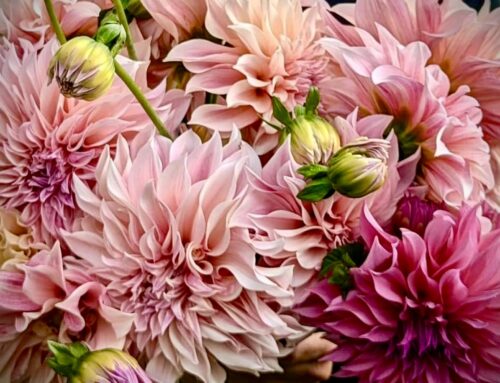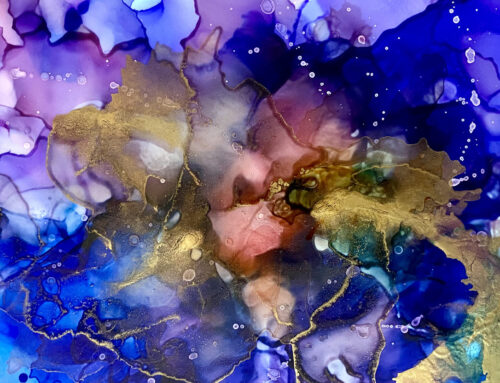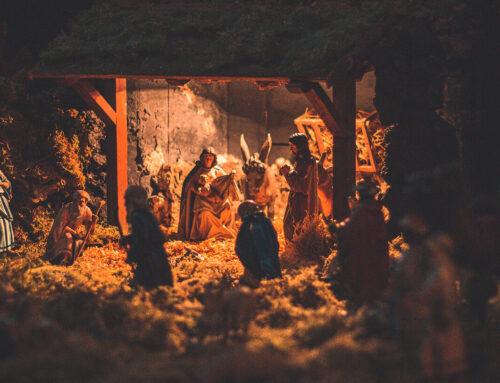I recently sat in St. Patrick’s Cathedral in New York City, a mecca for Catholics. Ironically, I think it’s a mecca for anyone deeply rooted in a religious tradition. I am surrounded by the trappings of my past, of all that is Catholic: stained glass windows my great grandfather worked on, statues and carvings of the saints and stations of the cross, the smells of incense, dust and old lady perfume, candles flickering everywhere, holy water fonts at every doorway with fingers dipping repeatedly for blessings, rows of straight-hewn pews with missals lining the backs, hushed voices whispering the rosary, the genuflecting faithful, charity boxes marked for the poor, gilded sacraments, and echoes of the voices of choirs and cantors of centuries gone by.
When I walked into the cathedral I stopped, as most everyone does, to soak up the magnitude of the place, this echoing, cold, cavernous sanctuary dedicated to the glory of God. I watched visitors dip their fingers into the holy water and perform the sign of the cross, a magical sign of blessing and hope. I did not partake. I am not Catholic any more, I do not need to do the sign of the cross on myself to ensure safe passage in life. Nor do I need to acknowledge my understanding of the divine in this antiquated fashion. That, and I have a dose of, “YOU CAN’T MAKE ME” running through my bloodstream.
I walked up the middle aisle and found a relatively empty area to sit down. Activity was all around me, a beehive of the mystical and the magical humming and buzzing in a variety of languages. I have been here many times before, yet I could already feel I was seeing with different eyes, eyes that were reaching back 2,000 years.
I contemplated the tourists coming and going, methodically walking the outer aisles and reading placards about the saints like St. Anthony of Padua, St. Clementine and St. John of the Rose, and lighting candles for good measure. I closed my eyes again, all my senses were already awakened upon entering, but now as I entered my inner cathedral, more memories came flooding in. Hail Mary, full of grace, the Lord is with thee, blessed art though among women and blessed is the fruit of thy womb Jesus. Holy Mary, mother of God pray for us sinners now and at the hour of our death, Amen… Lord I am not worthy to receive you, but only say the word and I shall be healed… Christ has died, Christ is risen, Christ will come again… Even as I write this, I can feel my chest tighten. This is not who I am and yet I have held onto the words even though they continue to haunt me.
When I opened my eyes, I noticed the man sitting in the pew in front me. He was weeping – silently, openly. He would put his hand to his face, bow his head and let the tears flow. Then when it seemed as though there were no more tears, he would lift his head to the heavens, searching for relief, maybe waiting for a reason for his suffering. I know this look all too well. Searching the sky, seeking answers, that soundless scream reverberating, pleading to take that which lay so heavy on my heart. In those moments you wonder if the pain will stop, if the tears will ever end. I send him the energy like that of a loving father, seeing that energy wrapping its arms around him, enfolding him in grace, warmth and tenderness.
A woman nearby catches my attention. As my eyes adjust to the low light she is standing in, it dawns on me that she has a small stack of square, plain white cards that she is dipping in the holy water font, and placing them in a bag. My imagination can’t help but run wild with this. What is she doing? Where are these cards destined? I think anywhere else it would seem strange, yet no one seems to notice what she is doing. I watch her for a few minutes, her face and body very determined to complete this task, as if she knows others are counting on her – this is a moral, truth and theological imperative.
I turn my attention back within, to my own holy reservoir. These are my people, these are my roots – in this building, in its soul. At one time I ran from this religion and all its constructs, feeling stagnant and oppressed. Over the last twenty years I have slowly made peace with it, coming to understand it with a renewed innocence. I have carried forward my Catholic love of ritual in a renewed way, I have embraced the sanctity of the true mysticism at the heart of Catholicism. There are elements of being Catholic that I have loved, that have no words to adequately portray on paper. With my eyes closed and the organ music resonating through me I allow this place to wash over me. In my silence, I had found what Teilhard called “the chosen part of things.”
The chosen part of the ritual of the holy water for this woman was not just about the paper or the water, it was about her interior world of connecting to something greater than herself, connecting to her loved ones who would be receiving one of these cards, and what it meant for them, being of service for humanity. The chosen part of things for the grieving man was not only whether God lived up in the sky or in the cathedral among the statues, candles, and eucharist, but that he was spending time seeking, searching for meaning, wanting to release his pain, and find the comfort of a soft place to fall.
The chosen part of things. I begin to weep. A deep release comes up from within. It has no words, it asks nothing of me, it wants nothing of me – it has come to pass. A space has been made in my altar with this release. The chosen part of things is not what words I use, whether it be the Hail Mary, Kyrie Eleison, Kaddish, Shanti Mantra, Salah or Prayer for Protection, or the silence with each other. It is the yearning deep within, a longing to connect – to self, to the divine, to the world.
That yearning is the mystery at the heart of life. It is a cycle, just as the hours of each day and seasons of every year, and the circulation of the blood in the body. Like the sacred hoop of the Native Americans and the mandalas of ancient peoples, the yearning reminds us that all is alive and moving, interconnected and intersecting.
The chosen part of things is in all faiths and none, there is an urgency to taste it and know it. The chosen part of things is about falling in love with my world, others, and myself with God, with my pain and my joy. We are made for this – we are the chosen part of things in a dance yearning to discover ourselves and lose ourselves over and over. And in losing ourselves we find whatever means will give us comfort so that we might dance some more and fall in love all over again.








Kelly, this is beautiful. You tapped into the experience encountered by so many…thank you. (I laughed at the “No you can’t make me”…since I was a first grade teacher, mine sounds like a 6 year old “You’re not the boss of me.”)